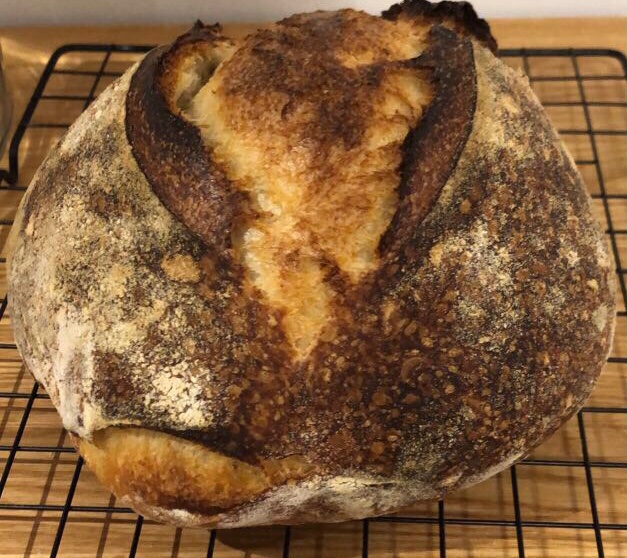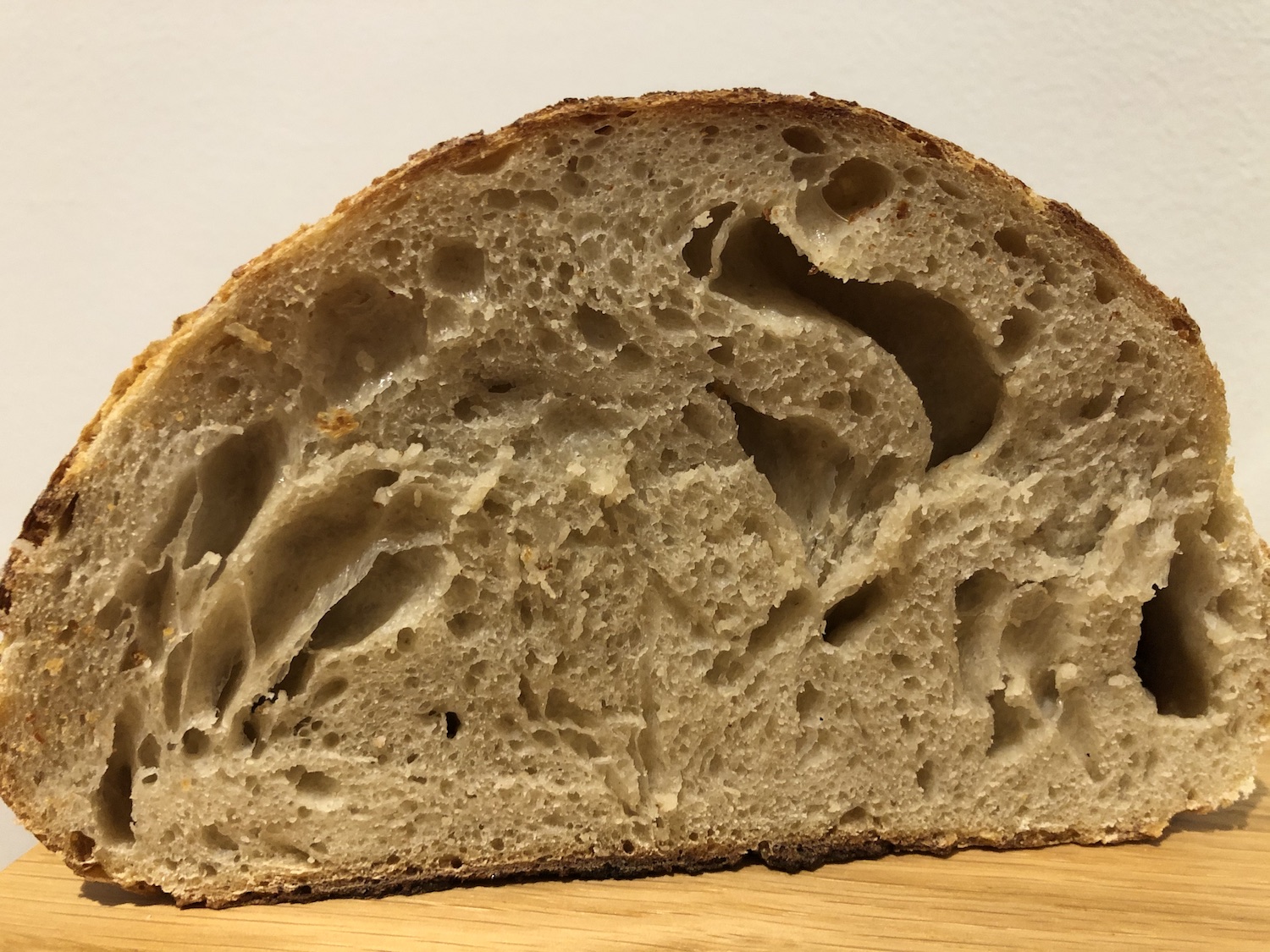Hi everyone. I am new to sourdough bread making. I have had success in creating a nice outer appearance and crust with my sourdough bread, but unfortunately, the inside always turns out slightly wet and sticky. Even when I squish the bread together, I can almost hear a "squish" sound, which definitely seems like too much moisture for this bread.
Here is my routine:
Ingredients
100g active starter
500g Unbleached All-Purpose Flour
340g water (68% hydration)
15g Kosher Salt
Process:
-Mix starter and water, add to flour and mix
-Autolyse for 30 minutes, mix in salt; stretch and fold
-45 minute wait, stretch and fold
-45 minute wait, laminate dough
-1 hour wait, stretch and fold
-1 hour wait, stretch and fold
-1.5 hour wait, shape the dough, place into bowl
-Sit for 20 minutes, into fridge for about 12 hours
Cooking:
-Preheat dutch oven at 500 degrees
-Once oven is ready, put loaf from fridge into dutch oven, lid on, drop temperature to 475F
-Cook for 30 minutes
-Take off dutch oven top, cook for 15 more minutes at 475F
I have attached pictures of my most recent loaf, which was slightly wet and slightly sticky. I am happy with the crumb, and I had let this loaf cool down to room temperature before cutting into it. I have even waited an entire day before cutting into my bread, and still with no luck. I just can't figure out why my interior bread is slightly wet and sticky.
Any help is greatly appreciated, thanks a lot!


Can come from under fermented and/or under baked bread. You've got a bit of a false crumb there which points to under fermented. It's not too bad but you might wish to look at the starter or the bulk ferment. You mentioned you were new to sourdough so it's probably just down to reading when the starter or dough is done. Keep practicing and it'll come. Try pushing both a bit more.
Thanks for the advice Abe. Perhaps this loaf was under-fermented, because I have had better crumb results with the same baking method with other loaves. I have attached a picture. Even though the crumb is better in this case, is the wetness and stickiness still possibly due to under-fermentation?
Under fermented to me. What’s your ambient temp?
I am not sure of my exact ambient temp. I would assume room temperature, if not slightly warmer. Are you saying that a higher temperature during fermentation would help with the wet/sticky problem?
Benny said:)
Lower temperature = slower fermentation = dense sticky loaf. You said room temperature...what is that temp? If its in the low 70's you may have to push your bulk until the dough TELLS you it's ready. Follow Benny's comments and observe the dough not the clock.
Definitely under fermented. Was your levain at peak, the dome just starting to flatten? Was your dough domed, with bubbles on the surface and edges of the bowl and nice and jiggly when you gently shook the bowl at the end of bulk? Quite likely a combination of levain not used at peak or under active, too low a temperature or not long enough bulk fermentation.
Hi Benito. I am almost positive my levain was around its peak, and my levain is quite active. I have actually never tested jiggling my loaves. Perhaps it is the temperature and errors with bulk fermentation. Do errors with bulk fermentation periods and lower temperatures result in sticky/wet insides of sourdough loaves?
Also, I have attached an above picture to Abe of a previous loaf that I had cooked with the same method. The crumb appears better, but it was still damp and slightly sticky. Could fermentation and low temperatures still be the cause?
Always remember temperature should be taken into consideration when thinking about both bulk fermentation and final proof. It your dough temperature is lower than usual then both bulk and final proofing will be slower than your usual. It is a good idea to think about dough temperature, keep notes and take the temperature of your dough.
Your crumb photo does show a somewhat under fermented crumb. So slowed fermentation due to cold temperatures could definitely be the cause. Do your your dough a gentle shake, it will tell you a lot the more you bake, a well fermented dough will have a good jiggle. Observe the dough, is it domed? Are there some surface bubble especially around the sides of the dough? Then it may be nicely fermented and time to shape. If not, it probably needs more time. Inclusion such as fruits and nuts do throw this off somewhat, but for straight dough without inclusion look for the signs that it is adequate fermented.
Oh and yes, underfermented dough will lead to sticky gummy dense crumb. I don’t find that overproofed crumb is as sticky, in fact somewhat overproofed bread is more enjoyable to eat than underfermented to me.
Benny
This is an excellent tutorial on assessing bulk fermentation:
https://youtu.be/4yM-gKlGX5Y?t=483
As Benito suggested, there's nothing that'll help you more than keeping careful track of all the various temperatures involved (room, water, mixed dough temp prior to adding salt, mixed dough temp after adding salt, etc). And although it definitely sounds as though your crumb is too moist, a great sourdough crumb is quite moist, imo!
you are not the only one..to have this problem! in the north europe, the place this bread has its origin, only two or three houses eat optimal fermented bread due to the cold the other ones lie each other about the beauty of their crusty loaves. thats sourdough bread, heavy and unbaked inside with a tricky crust!